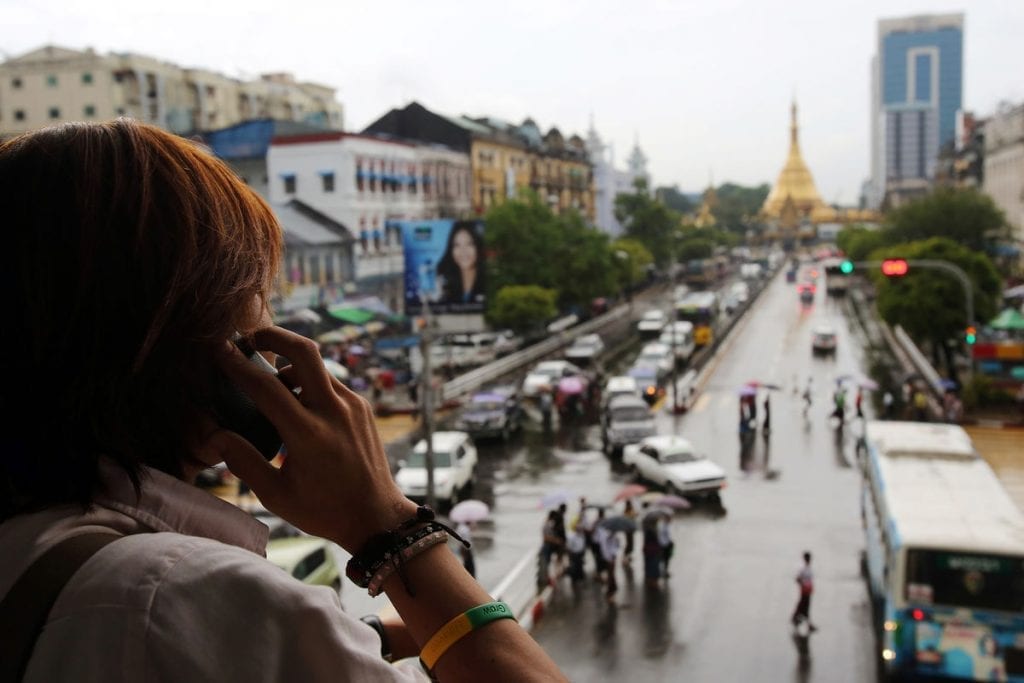
However, the increasing integration of technology, driven by innovative telecom solutions, offers a pathway to transform education and bridge critical gaps. By leveraging advancements in connectivity and digital platforms, Myanmar has the potential to leap into the digital age, ensuring access to equitable and quality education for all its citizens.
Myanmar’s education system has long suffered from systemic underfunding and limited technological integration. Rural areas, which comprise a significant portion of the country, often lack adequate educational facilities, qualified teachers, and access to updated learning materials. However, technology is emerging as a vital tool to address these issues.
The use of information and communication technologies (ICT) in Myanmar’s education is relatively nascent but promising. According to a UNESCO profile, technology integration is seen as a critical strategy to improve the quality of education. Efforts are underway to adopt mobile and internet-based solutions that cater to both urban and rural populations.
Myanmar’s telecom sector has experienced rapid growth, with mobile penetration reaching over 75% of the population in recent years. Mobile platforms are increasingly used to deliver educational content, enabling students in remote areas to access resources previously unavailable to them. Programs like SMS-based learning modules and mobile apps tailored to Myanmar’s curriculum are transforming student engagement.
However, internet penetration remains a key challenge, particularly in rural areas with sparse connectivity. Initiatives to expand broadband access, including public-private partnerships, are addressing this gap, as seen in the Asian Development Bank’s efforts to enhance digital infrastructure, emphasizing affordable and reliable internet access for educational equity.
The COVID-19 pandemic further accelerated the adoption of remote learning solutions, with initiatives like Ericsson’s partnership with Myanmar’s Ministry of Education focusing on digital classrooms that cater to both urban and underserved communities through live and recorded lessons.
Meanwhile, emerging technologies such as virtual reality (VR) and artificial intelligence (AI) are making education more engaging and interactive. Pilot projects supported by Frontier Technologies Hub have demonstrated the potential of VR in simulating science experiments and historical tours, offering students enriching educational experiences even in resource-constrained settings.
Despite significant progress, several challenges continue to hinder the large-scale implementation of telecom-based educational solutions in Myanmar. Infrastructure limitations, such as inconsistent power supply and insufficient telecom towers in rural areas, make it difficult to sustain digital learning platforms. Additionally, while mobile penetration is high, the cost of data and devices remains prohibitive for many families, particularly in underserved communities.
Digital literacy also poses a significant barrier, as both teachers and students often lack the necessary skills to effectively use digital tools, highlighting the need for targeted capacity-building initiatives. To overcome these obstacles, collaborative efforts have proven instrumental.
Public-private partnerships, like Ericsson’s initiatives with Myanmar’s Ministry of Education, demonstrate how companies can drive digital inclusion by providing infrastructure and platforms for remote education. Furthermore, grassroots programs led by local NGOs are equipping rural schools with basic ICT tools, ensuring even remote areas benefit from technological advancements.
Ericsson’s ‘Connect To Learn’ program in Myanmar focuses on improving education in rural areas through innovative public-private collaborations. The initiative, Ericsson’s largest deployment to date, supports 31 schools, 310 teachers, and over 34,000 students, more than half of whom are girls. It has also provided 600 scholarships for girls.
The program enhances literacy, numeracy, and ICT integration skills, with 155 teachers completing UNESCO’s ICT-pedagogy training, enabling them to enrich classroom teaching and mentor other educators. Partners include Ericsson, the UK Department for International Development (DFID), UNESCO, and Myanmar Post and Telecommunications, with support from Myanmar’s Ministries of Education and Communications. The project aligns with the UN’s Sustainable Development Goals (SDGs), particularly those focused on quality education, gender equality, and reduced inequalities.
International bodies, such as the Asian Development Bank, emphasize the importance of policy frameworks that support ICT integration, investment in digital literacy, and the creation of affordable and localized content. Looking ahead, several growth areas hold promise for telecom-driven education in Myanmar.
Myanmar’s approach to integrating technology into education emphasizes legislative frameworks, infrastructure development, and competency-building for learners and educators. Although terms like ICT and EdTech lack precise definitions in foundational documents like the 2008 Constitution and 2014 National Education Law, the country’s policies, such as the 2016-2021 National Education Strategic Plan and the 2019 Myanmar Digital Economy Roadmap, recognize technology’s transformative role in education.
These policies aim to enhance teaching and learning through modern technologies, improve digital skills among students and teachers, and establish a digital economy. Efforts like the Teacher Competency Standards Framework (TCSF) and UNESCO’s Media and Information Literacy (MIL) Competency Framework support these objectives, focusing on equipping educators with the tools to drive quality education and fostering 21st-century skills in learners. Initiatives like the Myanmar Digital Education Platform (MDEP) and distance learning modalities introduced during the COVID-19 pandemic illustrate the nation’s commitment to ensuring equitable access to quality education, even amidst challenges.
Infrastructure and access to digital tools also play a pivotal role in Myanmar’s strategy. Programs such as the Universal Service Strategy aim to provide schools with adequate ICT resources, password-protected Wi-Fi, and up-to-date computers. Furthermore, special projects under this program focus on creating content and applications tailored to underserved communities. The Myanmar Telecommunications Masterplan sets ambitious goals for high-speed internet access across the country.
Investments in distance learning and alternative digital learning centers aim to expand ICT training beyond formal education, ensuring inclusivity. These efforts align with the broader goals of the Myanmar Sustainable Development Plan, which emphasizes the importance of digital infrastructure in fostering equitable education and sustainable growth.
Through concerted efforts, Myanmar’s telecom solutions have the potential to transform education, overcoming geographical, infrastructural, and socio-economic barriers to create a more inclusive and equitable system.